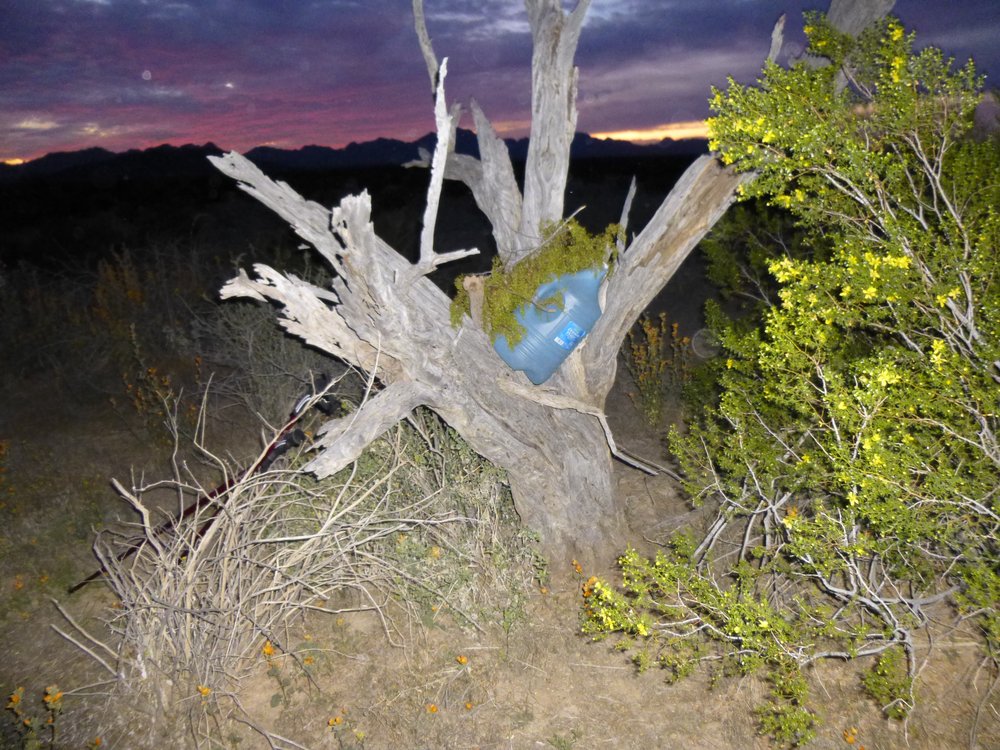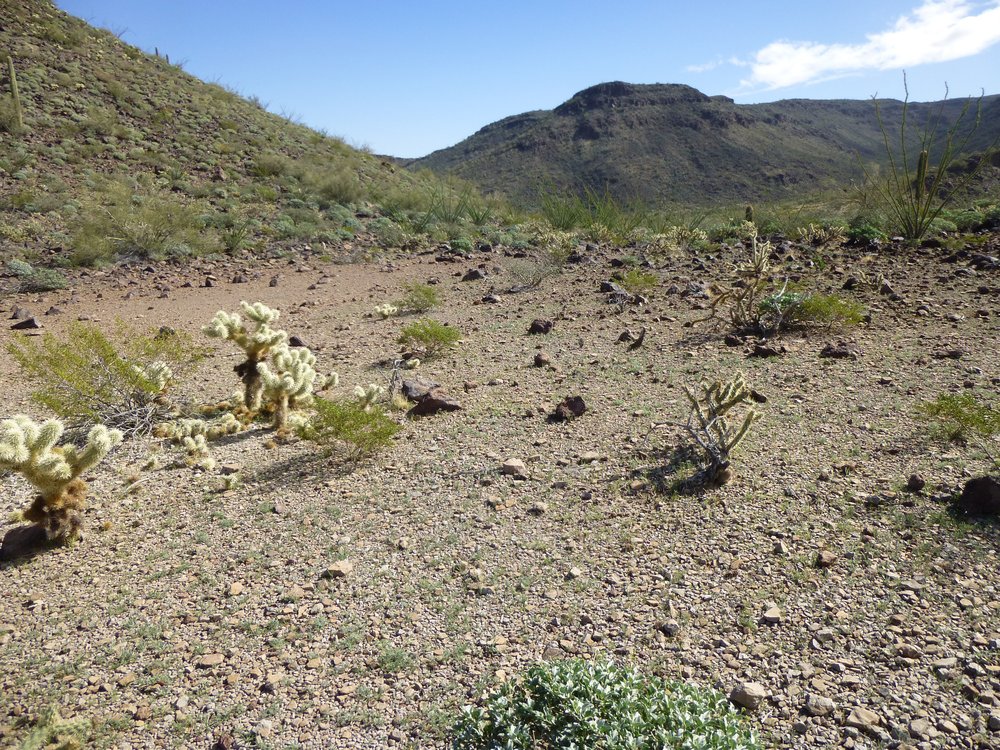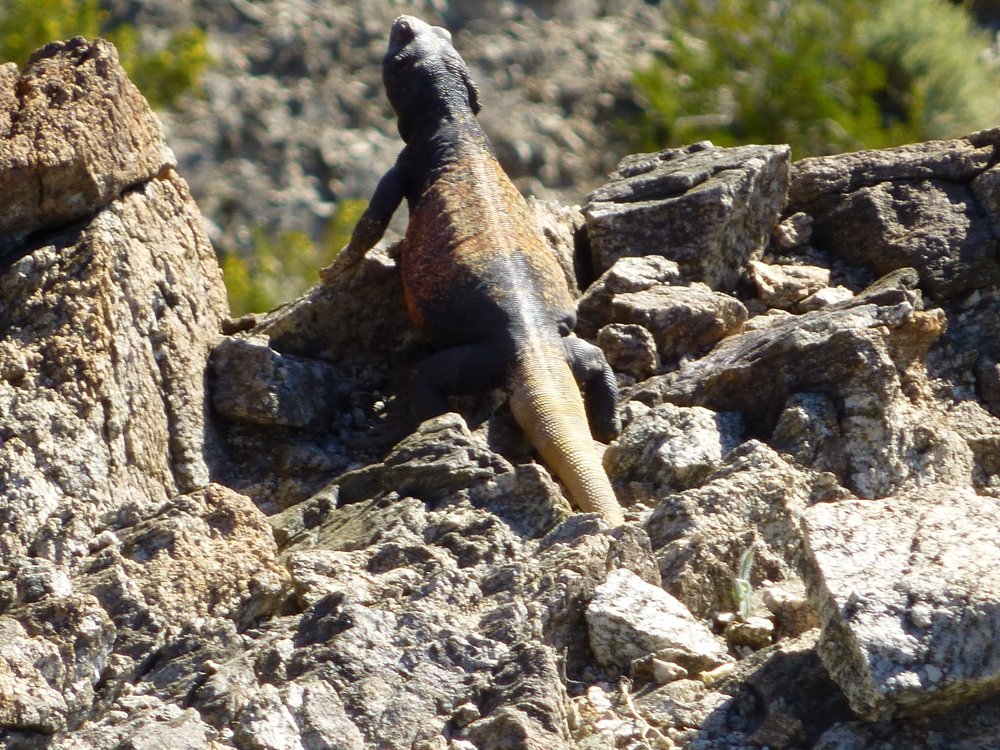Roller Skating
When I was in high school in the early 1960s, our church group, the CYO (short for Catholic Youth Organization) would a time or two each year hire a bus and conscript a few of our parents as chaperones and take us on an adventure. There wasn’t much that we ever did that was exciting as Catholic teenagers – bowling, or a highly-supervised dance was about it. So a trip across the border for 23 miles from Mission, British Columbia to Lynden, Washington to a roller rink was a big deal. Skating around to fun music on that big wooden floor, showing off your best moves while lights reflected off the mirror ball – well, that was something we just couldn’t experience back in our home town. It was memorable. The rink was built in 1946, but burned down in 1994. It was re-built, and has been going strong ever since.
Three Gallons
There aren’t many mountain ranges in Arizona where you can say that there is no water to be found, none whatsoever, but we had picked one where that held true. For the 20 miles of its length, there was nary a drop. We would spend a total of 9 days in the range, climbing our way along its length until we’d escape to the east after our last peak was done. How well I remember that last day. That afternoon, my partner had finished his last drop as we descended our final peak. I had a small mouthful left. In the fading light, our GPS guided us to a large 3-gallon jug of water we had cached in a tree weeks earlier before our trip had gotten under way. We prayed it was still there – our lives depended on it. Indocumentados may have found it and taken it; animals could have torn it open; Border Patrol agents would take it if they found it. Words cannot express our joy at seeing this as we walked the final few feet to the tree where we had stashed the water. We drank half of it immediately, and the rest of it over the final miles to our waiting vehicle.
The Winter of ’72
The seaside resort community of La Antilla, Spain is a bustling place, or at least it was in the summer months of the early 1970s when Spanish families flocked there for their vacations. Quite the opposite was true during the winter months, however. I spent the last 10 weeks of that year living in a modest house with a couple of other tourists a few blocks from the beach. All winter long, those homes sat vacant and could be rented for a song. It was the quietest, most relaxing time of my life – reading, resting, taking long walks on the beach. About the most ambitious things I did were a short excursion across the Portuguese border only 10 miles away and a hitch-hike to Seville one time.
I moved to a place called Punta Umbria for the first 10 weeks of 1973 – it was a sort of suburb of Huelva, the city from which Christopher Columbus sailed for the New World in 1492. It was only a few miles east of La Antilla. It too was a place of repose. I especially remember quiet walks through almond orchards in bloom in February. It was a bit of a culture shock returning home after 5 months of doing nothing on the coast of Spain that winter.
Climbing On Your Own
If you are climbing on your own, you can’t afford to make the slightest mistake. If you do, there’s no one on the other end of a rope to catch you or to encourage you. If any danger arises, all you can do is risk everything, but if you do, it is your life that is forfeit.
Colorado River Toads
Strange creatures indeed. The largest toads native to the USA, these things are huge – at 7.5 inches long, that’s bigger than my hand. I’ve never picked one up, but I don’t think I’d want to. If you click on this link, it will tell you all about these odd amphibians. They are poisonous, and I have no desire to mess with them. The fact that they are poisonous serves to protect them, I guess. There are well-documented cases of dogs biting these toads and then dying from the toxin getting into the dog’s system. Even crazier is how humans have tried to inhale or ingest these toad toxins to get high – this has resulted in deaths. The toads only come out during the rainy summer months to look for a mate – otherwise, they are underground in their burrows for the rest of the year.
The most memorable experience I had with them was in the summer of 1988. I had walked many miles across the desert and had arrived at José Juan Tank. As I walked through the tank, which was mostly dry at the time, there were a lot of plants that had grown up earlier in the season when there was more water present. These plants (I can’t remember what they were) were tall and thick and hid the ground quite well. As I walked, I must have caused a commotion, because all around me there began a rustling sound. It scared me at first, but when I looked carefully down at the ground between the stalks of the plants, I saw that the ground was crawling with huge Colorado river toads. They were everywhere. As I continued walking, they continued to move as I approached them. The tank was quite large, at least 150 feet across. I avoided stepping on them, and continued on my way once across, but thought about the unusual experience for hours afterwards as I continued towards my peak.
Not Eating
Over many years of climbing in the desert heat, I’ve found that on those hot days when I’m out climbing, I drink plenty of liquids to stay hydrated but I have little to no appetite for food of any kind. I can’t explain it, other than to say that the heat seems to kill my appetite. I can go all day, climbing for many hours and burning many calories, without feeling any hunger at all, as long as I drink a lot. It doesn’t make any sense physiologically, I know, but it’s always been that way, and it doesn’t seem to adversely affect my climbing. Go figure.
Gila Monster
Here in the desert southwest, we share the land with an unusual creature that we call the Gila monster. It is the only venomous lizard native to the United States, and although it is common enough, is rarely seen by humans due to its secretive lifestyle. In my 35 years of roaming the desert, I doubt I’ve seen them beyond a dozen times. Many years ago, my wife and I were driving in the back country and saw one crossing the road. We stopped the car for a closer look, and as we approached it, it hissed loudly and lunged at us with surprising speed. We gave it a wide berth and moved on. Here is an excellent Wikipedia article for your reading enjoyment, but the main things I took away from it were the following: when one bites you, it chews the venom into the wound; the venom is as toxic as that of a western diamondback rattlesnake; its venom is the most painful of any vertebrate on the planet. Be sure to read the article, as it is quite startling.
The Forgotten Corner
Winter was coming, and even in the desert we can expect cooler weather. I had waited months to make my move, so I showed up at the visitor center one November day to get a permit for overnight camping. I wanted to do things right – after all, it was a national park, they had rules, and I wanted to be a law-abiding citizen. They had a big map on the wall behind the main desk, and it showed the park divided into a number of sections. The girl asked how she could be of service and I told her I’d like a permit to camp overnight in what appeared to be Area 7. She gave me an odd look and asked me to wait a moment. She left and returned shortly with an older woman who introduced herself as the park superintendent, who promptly asked me why I wanted to go to that part of the park. I told her that there was a mountain I wanted to climb and it happened to be in that area. She said that to her knowledge nobody had ever requested a permit to camp overnight in that area. It was very remote, there were no roads and it was along a lawless stretch of the Mexican border. I told her I understood all of that, but that didn’t change the fact that my mountain was within that part of the park. Was I within my rights to pay the fee to get an overnight camping permit for that area, whether I was the first person or not? She seemed to agree, somewhat begrudgingly, that I was entitled. I paid the fee and bid her good day, permit in hand, and the rest is history.
A Night On The Wall
A bunch of us climbers had gone in to an area that was seldom visited. It was hard to reach and had a certain mystique about it. We set up camp and each decided what we wanted to do for the next several days. The one thing that was known for sure about its peaks was that there were a lot of big granitic faces that had seen little climbing activity. One afternoon, two of the best climbers started up a difficult route on a big face. Part of the way up, bad weather set in and visibility was reduced to zero. Meanwhile, I had decided to climb the same peak but by an easy route around the backside, a simple walk-up. I made it to the top, then turned around and re-traced my steps back down the way I’d come, back to the camp we all had in the meadow below. The day wore on, and there was no sign of our two friends on the face directly above camp. Night fell and the rain came. We knew they must be miserable up there. The hours seemed to drag by so slowly. Finally dawn came, the rain stopped, the clouds lifted, our friends slowly worked their way down the face to the rest of us who waited with dry clothes and hot drinks and food.
Temporal Pass
It had only ever been a name on a map and I had no reason to believe I’d ever set foot in the place, yet there I was. The day will be forever burned into my memory, because only hours earlier I had come face-to-face with two drug cartel members atop a peak a few miles away. I was still somewhat skittish from that encounter. Anyway, there I was in Temporal Pass, just a low spot in the otherwise dramatic Growler Mountains. Here’s what the pass looked like, at 1,950 feet elevation. Not much to look at, is it?
I doubt any other climbers had ever stood there before me, as they would have no reason to ever go there. However, I have recently learned that the pass was a backdoor trail for smugglers importing moonshine into the town of Ajo during Prohibition.
Chuckwalla
Twice, that’s how many times I’ve ever seen these creatures. The common type of these lizards is about 16 inches long and is stocky. I saw one in the Granite Mountains and another in the Chocolate Mountains. They are harmless to humans. If you try to grab one, they will wedge themself into a rock crevice and inflate their lungs so you can’t pull them out – that’s what happened when I tried. Here’s a picture of one I saw.
I’m surprised I’ve seen so few of them in all my years of wandering in the desert.



